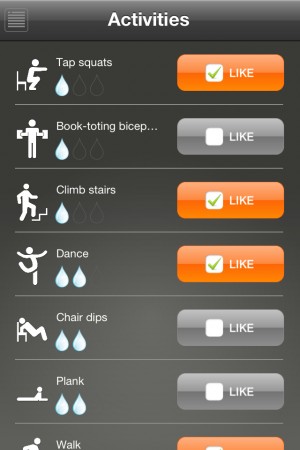Employers Address the Health Risks of Sitting
Posted: December 19, 2012 at 7:20 pm
Categories: News
Companies addressing the well-being of their employees are grappling with how to address a new health wrinkle: extreme sitting.
An extensive body of research links prolonged sedentary behavior—sitting—to a greater risk of obesity, heart disease, kidney disease, cancer and even earlier mortality. “Sitting disease,” as it’s been named by James Levine at the Mayo Clinic, isn’t counteracted by the recommended 30-minute stretches of daily physical activity. But, it turns out, something smaller makes a difference. Getting up for short activity breaks—one- or two-minute breaks—regularly throughout the day reduces our risk.
Dr. Levine offers recommendations to those seeking to reduce their sitting time. They include actions that probably sound familiar. Actions like pacing during a phone call or conducting a walking meeting. Dr. Levine’s not alone. Ted Eytan, the Director at Kaiser Permanente, is also an advocate of walking meetings, something he writes passionately and thoroughly about on his blog.
Some companies don’t leave activity to chance or individual choice. They make it simple and routine for employees to get up and move, with environmental changes like reverting to central printers, or making the stairs primary and offering standing or treadmill desks. Some companies facilitate brief at-work group activity breaks or recesses while others deploy browser or desktop devices that force activity breaks. These companies might also look to Hotseat, a mobile-based health game that uses nudges, social accountability and gameplay to make it quick, easy and fun to turn short two-minute breaks into meaningful activity.
Employees using Hotseat can select from its extensive roster of activities those they feel comfortable and capable of doing at work. The activities include strength, stretch and cardio exercises ranging from the traditional (push-ups and jumping jacks) to the contemporary (“Gangnam style” dancing). Hotseat then books a series of two-minute activity breaks on each employee’s calendar, based on their individual calendar availability and any “off-limit” hours employees set. When the time comes to take a scheduled break, Hotseat sends an alert, reminds each employee of the activity to complete, and counts down the time.
Employees who crave a side of competitiveness with their activity break can sign up for Hotseat’s challenges—setting up or joining teams, and competing for the longest unbroken chain of activity breaks. The challenges take full advantage of Hotseat’s activity roster. Employees choose from all-cardio challenges like “Jane Fonda Returns” to a more classic line-up, “Boot Camp.”
Hotseat lets users see how they stack up against themselves and others, with stats on their general activity level as well as their challenge triumphs. Employers have their own aggregate view of the data so they can also see who’s using the tool and what impact it’s having.
Whichever tool or method you choose, give your employees a healthy hand. Kick them out of their chairs.


Leave a Reply